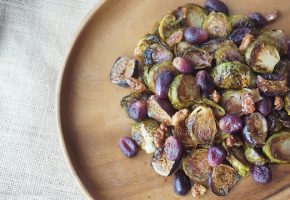Spring is in the air. Time to break out the shorts and head outdoors. Note: Mosquitoes think this is a great idea too, and they don’t even wear shorts. If you don’t want to come home from a day at the lake looking like Sponge Bob Square Pants, or worse, you need a plan.
While it is easy to reach for the DEET, it’s probably not a good idea. Although DEET is approved by the US Environmental Protection Agency (EPA), it has been linked to neurological problems; at least 18 different cases of children suffering adverse neurological effects, and even death. Researchers at Duke University Medical Center have found that DEET causes diffuse brain cell death and behavioral changes in rats. It is toxic to birds and aquatic life. Sadly DEET has been found in approximately 75 percent of U.S. water sources, including the Mississippi River.
But never fear, it gets worse. The topic here is actually mosquitoes and it turns out they can do a lot more than just make you uncomfortable.
Since 1937 mosquitoes carrying West Nile Virus (WNV) have been steadily making their way across the globe. Reportedly arriving first in the US in NYC in October 1999, cases have been continually on the increase, and have currently been documented in 39 states.
According to Wikipedia, WNV is “Now considered to be an endemic pathogen in Africa, Asia, Australia, the Middle East, Europe and in the United States, which in 2012 has experienced one of its worst epidemics. In 2012, WNV killed 286 people in the United States, with the state of Texas being hard hit by this virus.”
While that all sounds a bit apocalyptic, the risk is actually relatively low. How low exactly? Well, according to the CDC, “About 1 in 5 people who are infected will develop a fever with other symptoms, including, body aches, low energy and headache, fever, and stiff neck.” Bottom line, “Less than 1% of infected people develop a serious, sometimes fatal, neurologic illness.”
It’s that “fatal neurologic illness” part that sent me scampering our across cyberspace looking for some kind of effective natural bug repellent. (That and the fact that there is no cure or treatment.)
Good news is there are lots of options out there, and while they may not last as long as ones that contain DEET, they are plenty effective if applied regularly (every couple hours) – and most smell nice too!
So, how do you make natural bug repellent?
The main ingredients for any make it yourself insect repellent is essential oil. While these oils are considered “natural,” used improperly they can cause blisters, rashes and other complications, so caution is a must. If you are already hyper sensitive to smells (as I am,) have an autoimmune disorder, or are pregnant, these oils, even diluted, may not be for you. Young children are often sensitive to chemicals no matter what the source and essential oils are no exception.
With that in mind if you don’t want to be bugged this summer, here are some dissuasive oils you might try. All oils must be mixed with a carrier and should never be applied undiluted. The carrier can be water based, oil, glycerin, or alcohol depending on your preference. You’ll need a total of about 40-50 drops of oil per 8 ounces of bug repellent of any of the following.
Here is the sweet list of bug inhibitors!
- Basil
- Cedarwood
- Citronella
- Clove
- Eucalyptus
- Geranium
- Lavender
- Lemongrass
- Mint
- Rosemary
- Tea Tree
- Thyme
Once you have decided on a scent (or two!) the next thing to decide is if you want a repellent that sticks to you, (oil or glycerin) or one that has more evaporative qualities, (water or alcohol.)
Get yourself a small spray bottle, – a three to four oz travel bottle works great. Measure, mix, and spritz!
If you want a tried and true recipe, here is one from Scratch Mommy that is glycerin based
- 30 drops of Tea Tree Essential Oil
- 10 drops of Geranium Essential Oil
- 1 T vegetable glycerin
- Fill to (almost) the top with distilled H2O
Shake and apply as needed.
NOTE: Because of the Tea Tree Oil this repellent is not recommended for children.
Scratch Mommy Titles this one: “Great For Kids and Pets”
- Spray bottle (8oz or 10oz sizes work best)
- Water
- Witch hazel
- Peppermint, clove, lavender, or lemongrass essential oil for small children. Or lemon, eucalyptus, and tea tree for older kids and pets. (Lemon and eucalyptus can irritate the skin of very young children)
Create a 50/50 mix of witch hazel and water, and add 15 drops of the essential oil of your choice.
Remember topical applications are not the only way to discourage unwanted pests.
Mother Earth News reminds us that good old geranium and citronella are first and often best lines of defense against biting insects if you are just sitting around outside. Research by Guy Surgeoner at the University of Guelph, showed that citronella candles can reduce the number of bites by up to 42 percent!
*The essential oil in catnip (Nepeta cataria) , was found to be about 10 times more effective at repelling mosquitoes than DEET (N,N-diethyl-3-methylbenzamide), the widely used synthetic repellent.”
Other tactics to avoid being the main course at an outdoor buffet include wearing loose fitting clothing, and avoiding perfumes and sweet smelling shampoos, which oddly enough have the opposite effect of essential oils.
We have choices about what we put into and on our bodies. By choosing natural and organic products over harmful pesticides and additives, we are actively and effectively voting for the kind of world we want to live in.
To learn the prevalence of West Nile virus where you live, check the CDC website: www.cdc.gov/od/oc/media/wncount.htm

Elizabeth Chatellier, MA, RDN








 Contact us
Contact us





























